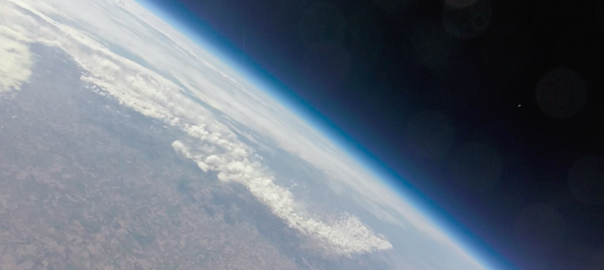For our 73rd flight from the NASA Nebraska High Altitude Ballooning program, we launched from the South Omaha Campus of Metropolitan Community College in Omaha, NE as a part of the General Physics II class.
Our main tracking equipment was sent back to the company for a firmware update at the end of last year. We received the updated package prior to the flight so we could bench test some new sensors.

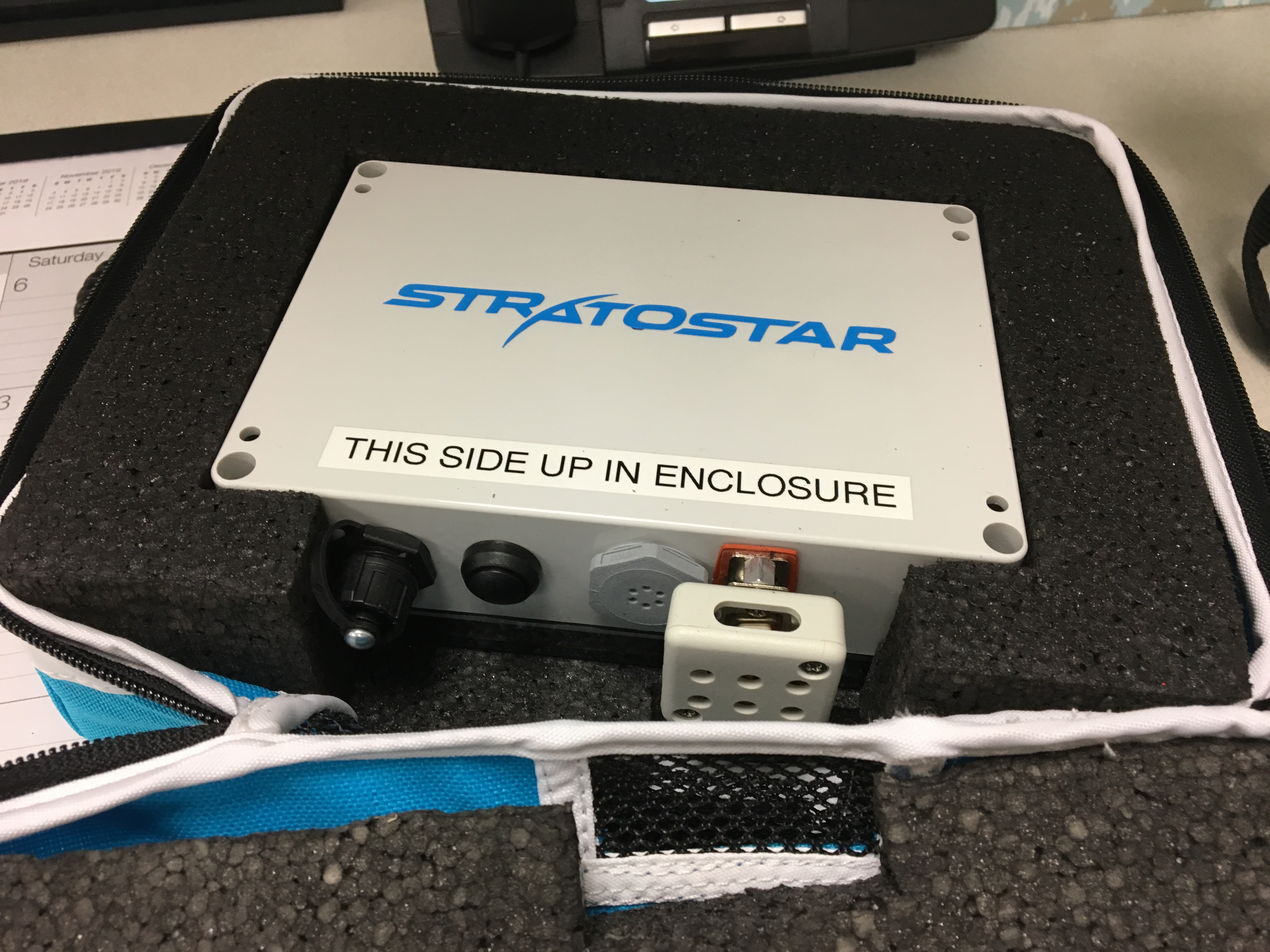

One of the new sensors we were testing for a team’s experiment was a UV sensor. While inside, it was too dark to read, but with a high-powered UV flashlight, we could almost peg the maximum of 5 volts. See Input 6 on the iPad app for Voltage readings. Multiply by 10 to get UV index for this sensor.
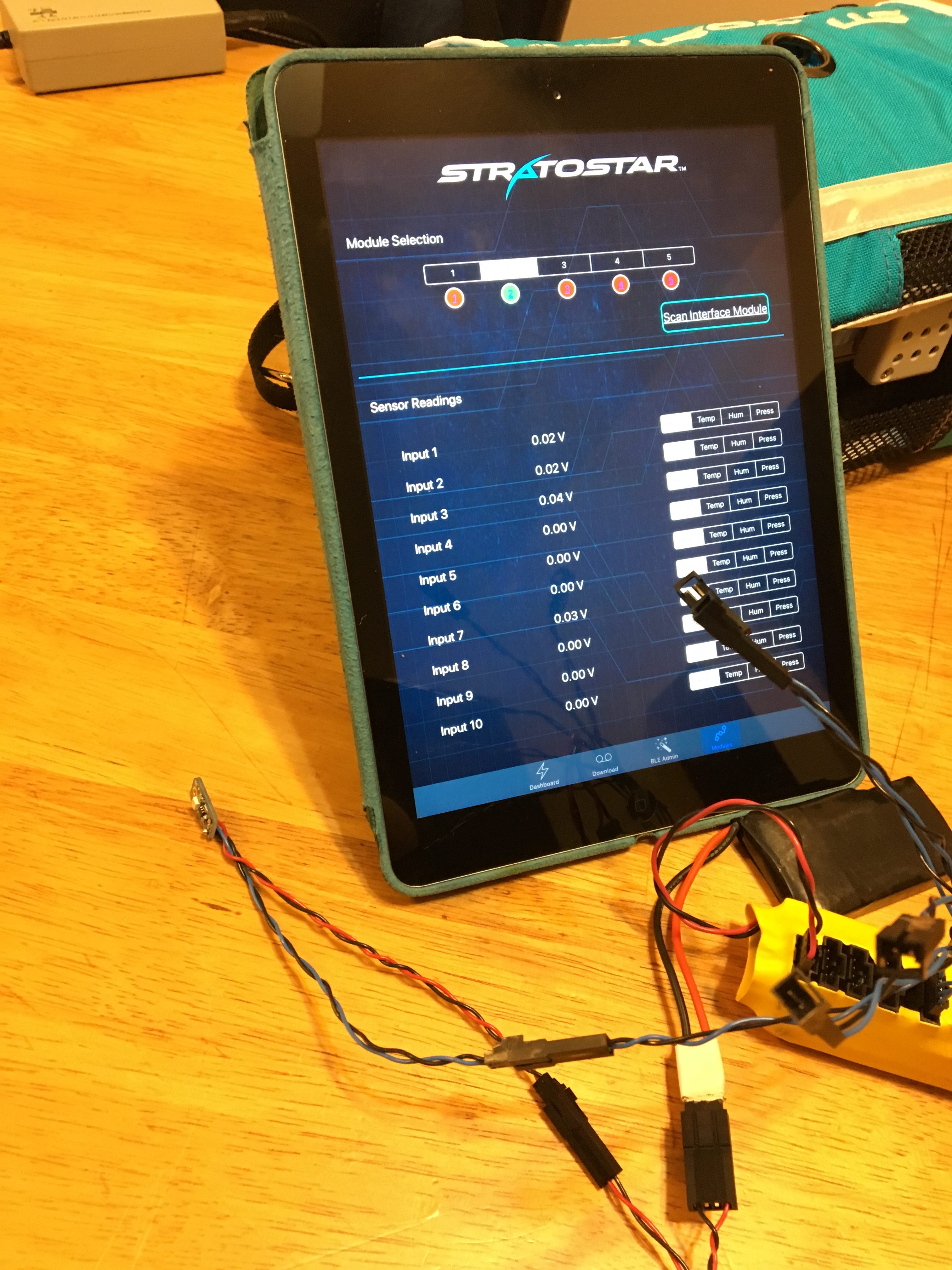
0.00 Volts 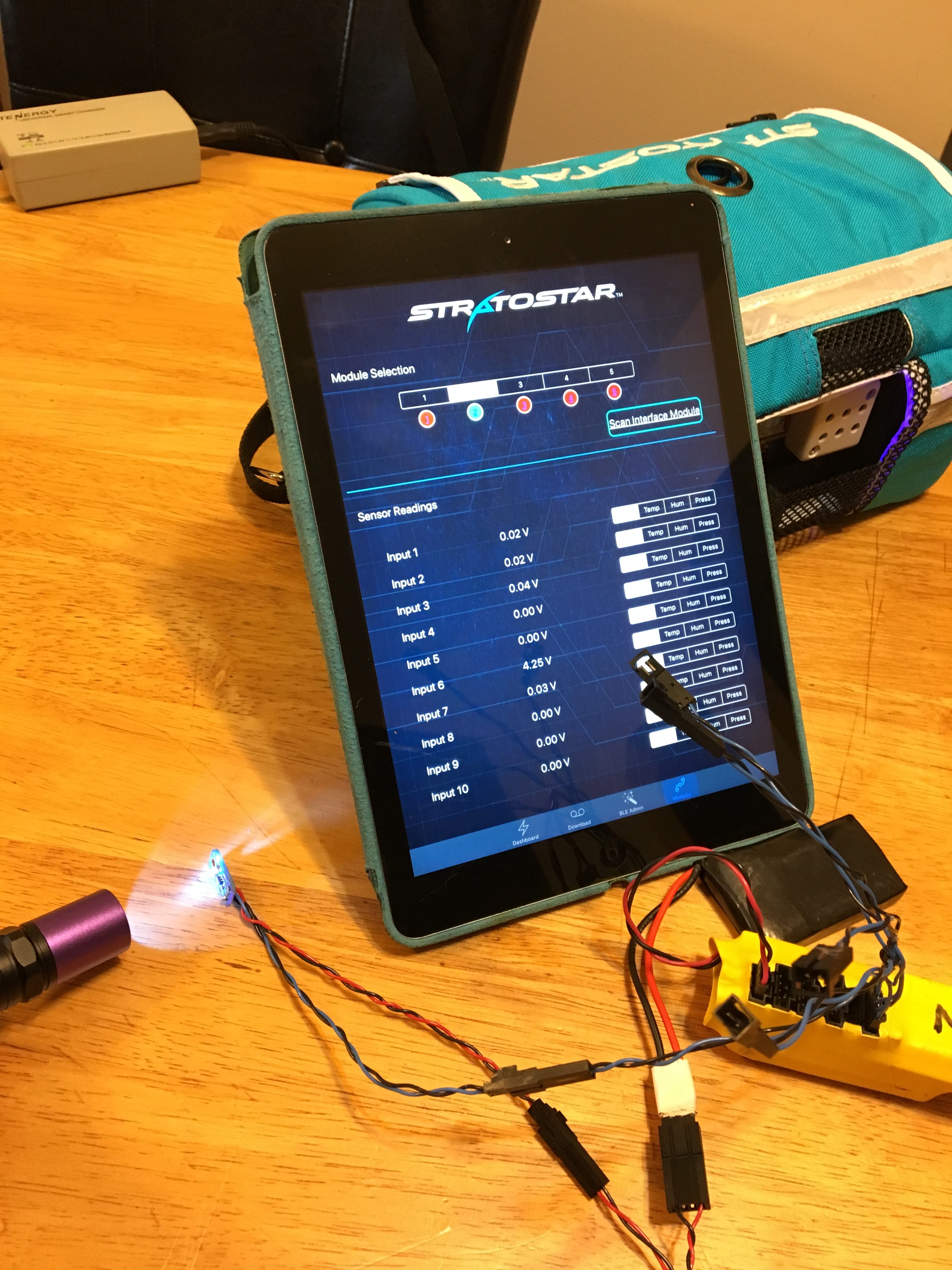
4.25 Volts
The night before the flight brought some rain, but by the time we set up, the weather was very nice with little wind.
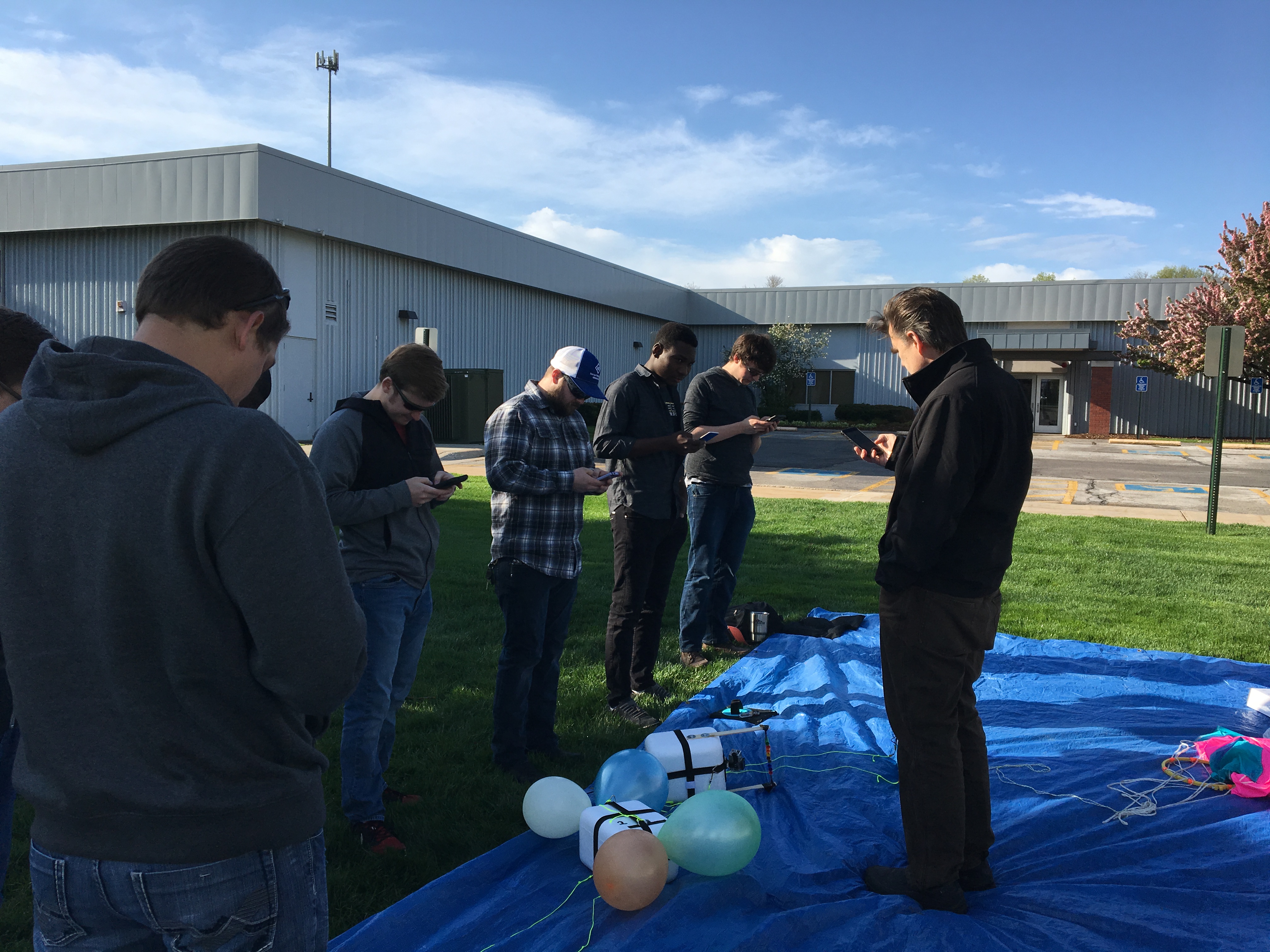
Michael gives the students a very brief physics lecture.
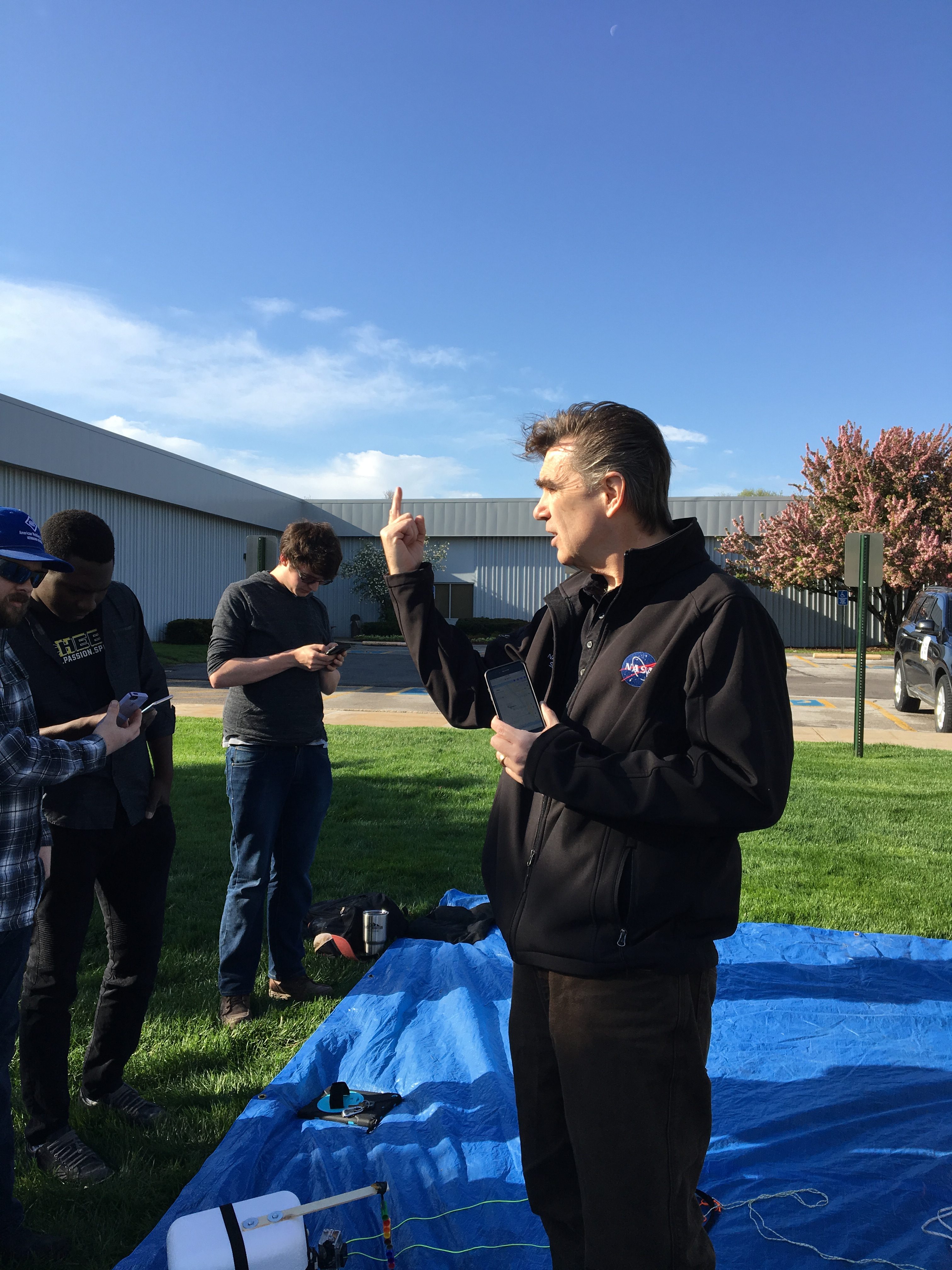
What goes up. 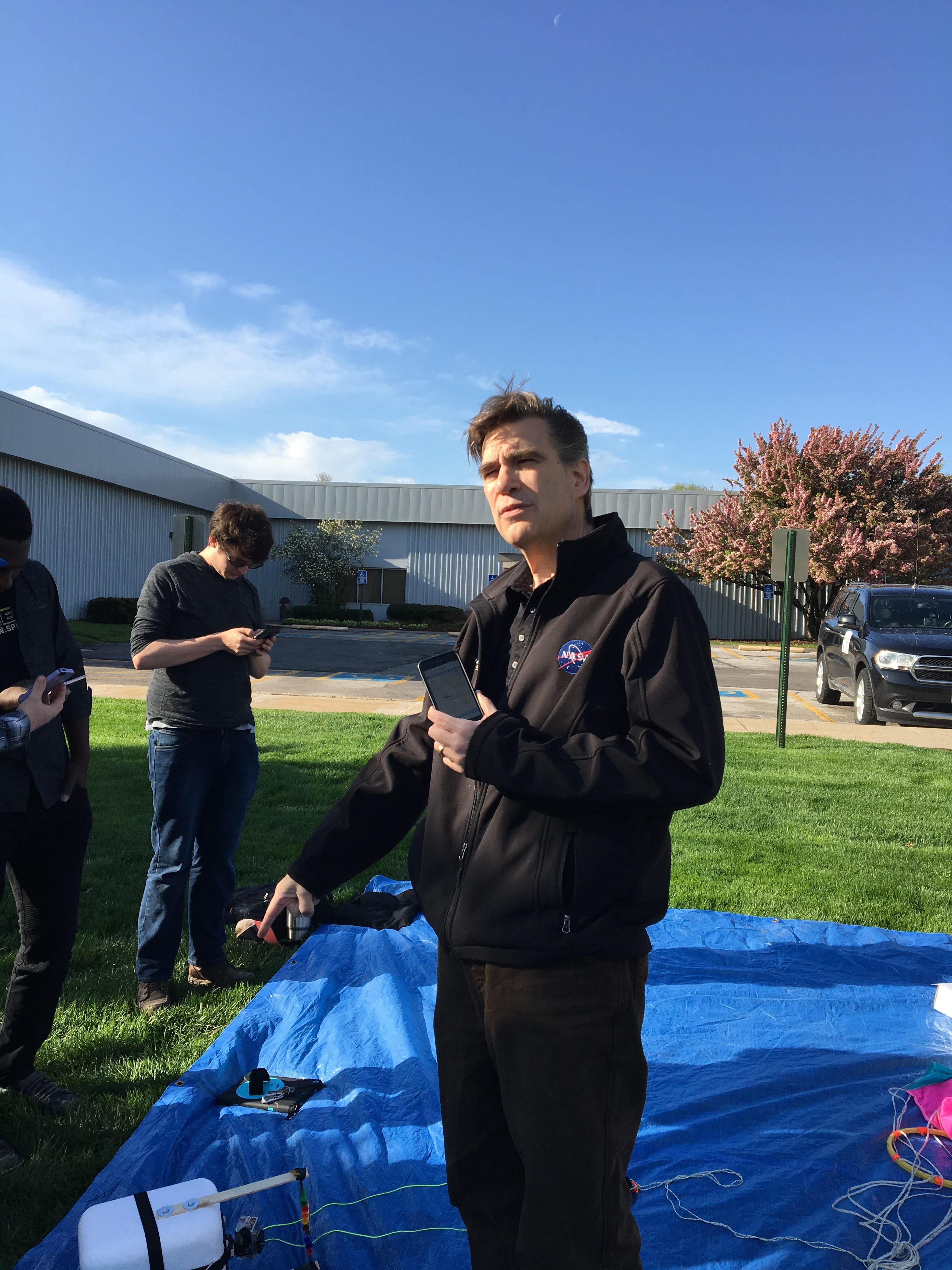
Must come down.
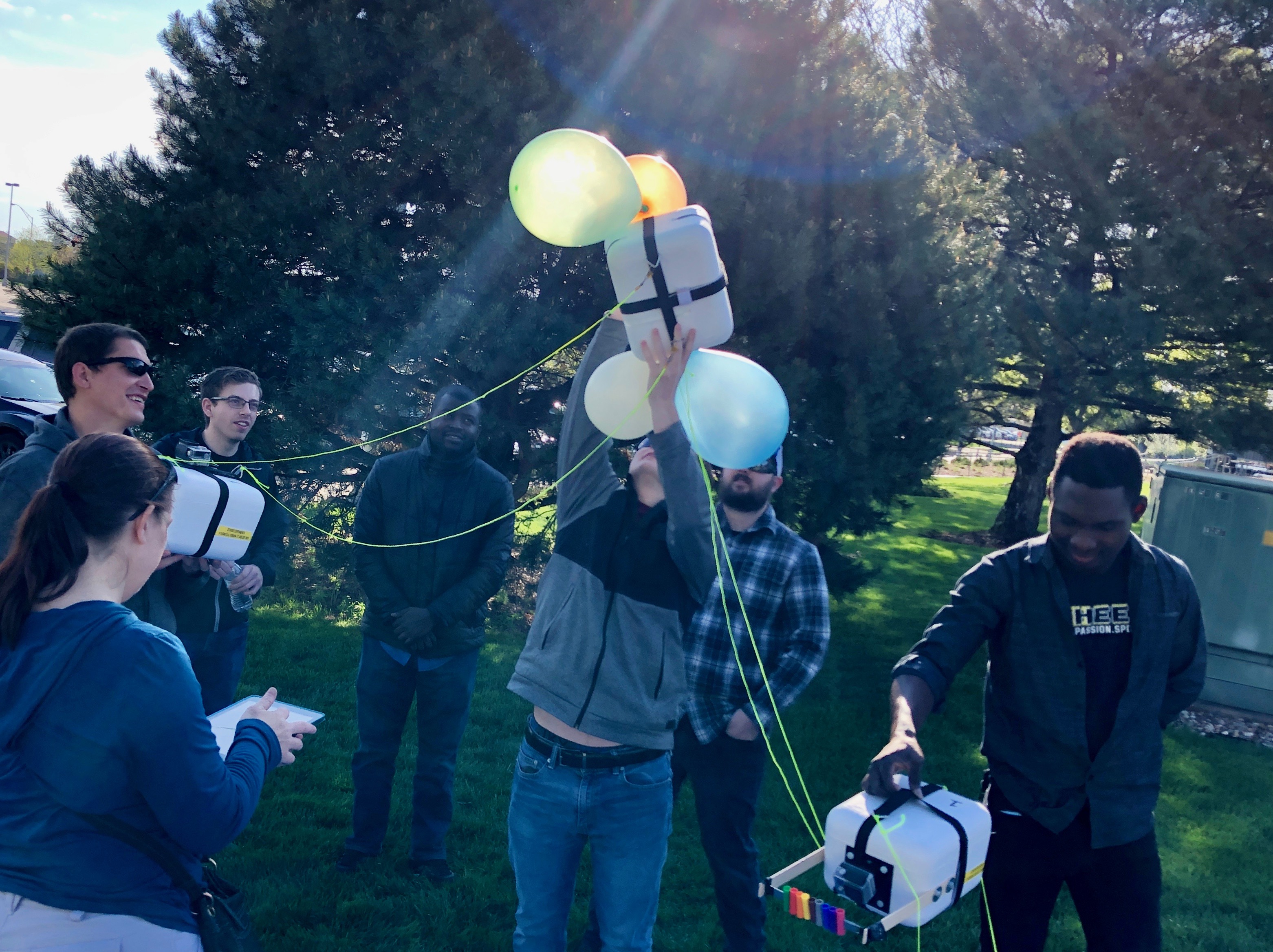

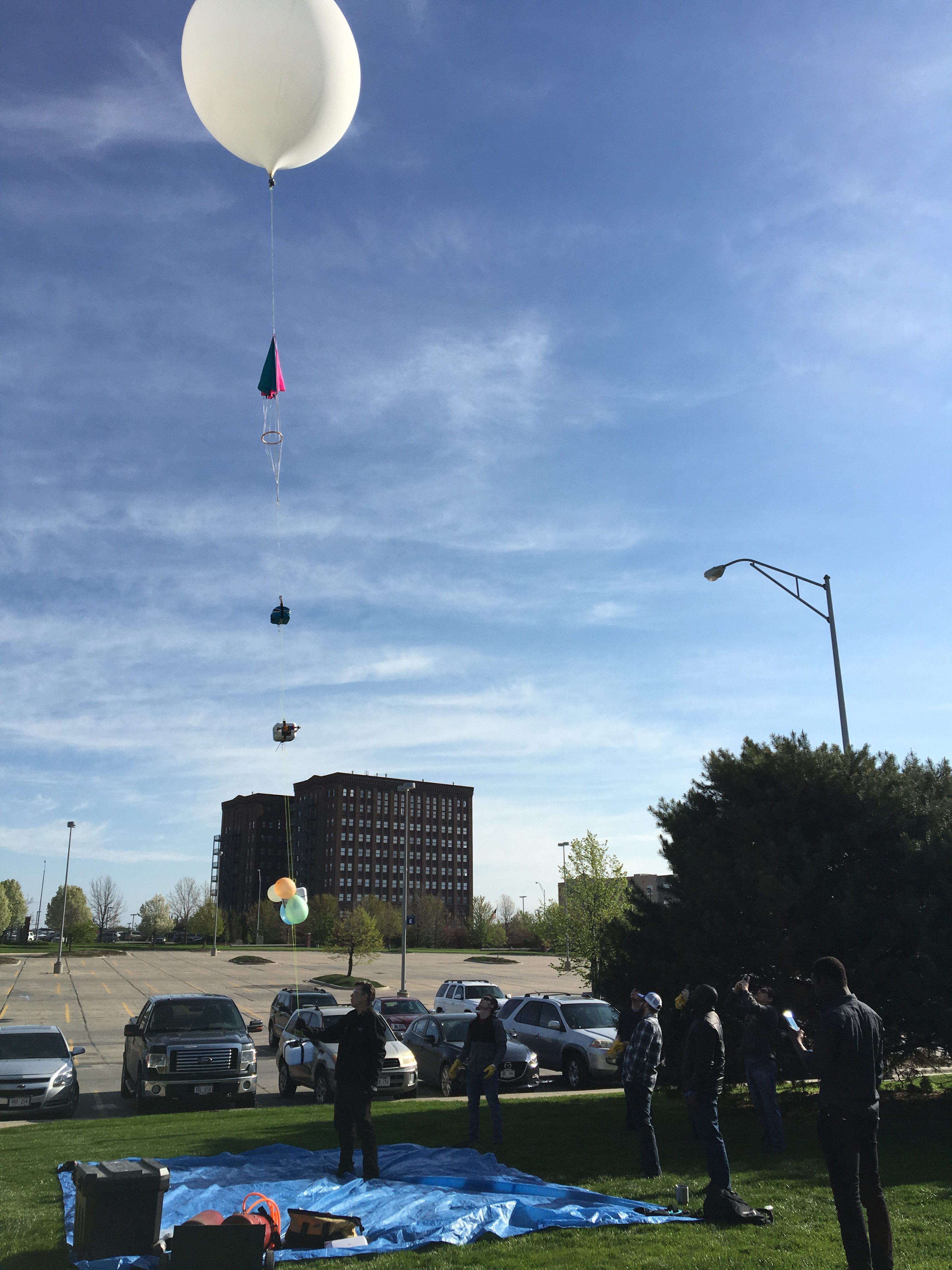
Countdown to liftoff 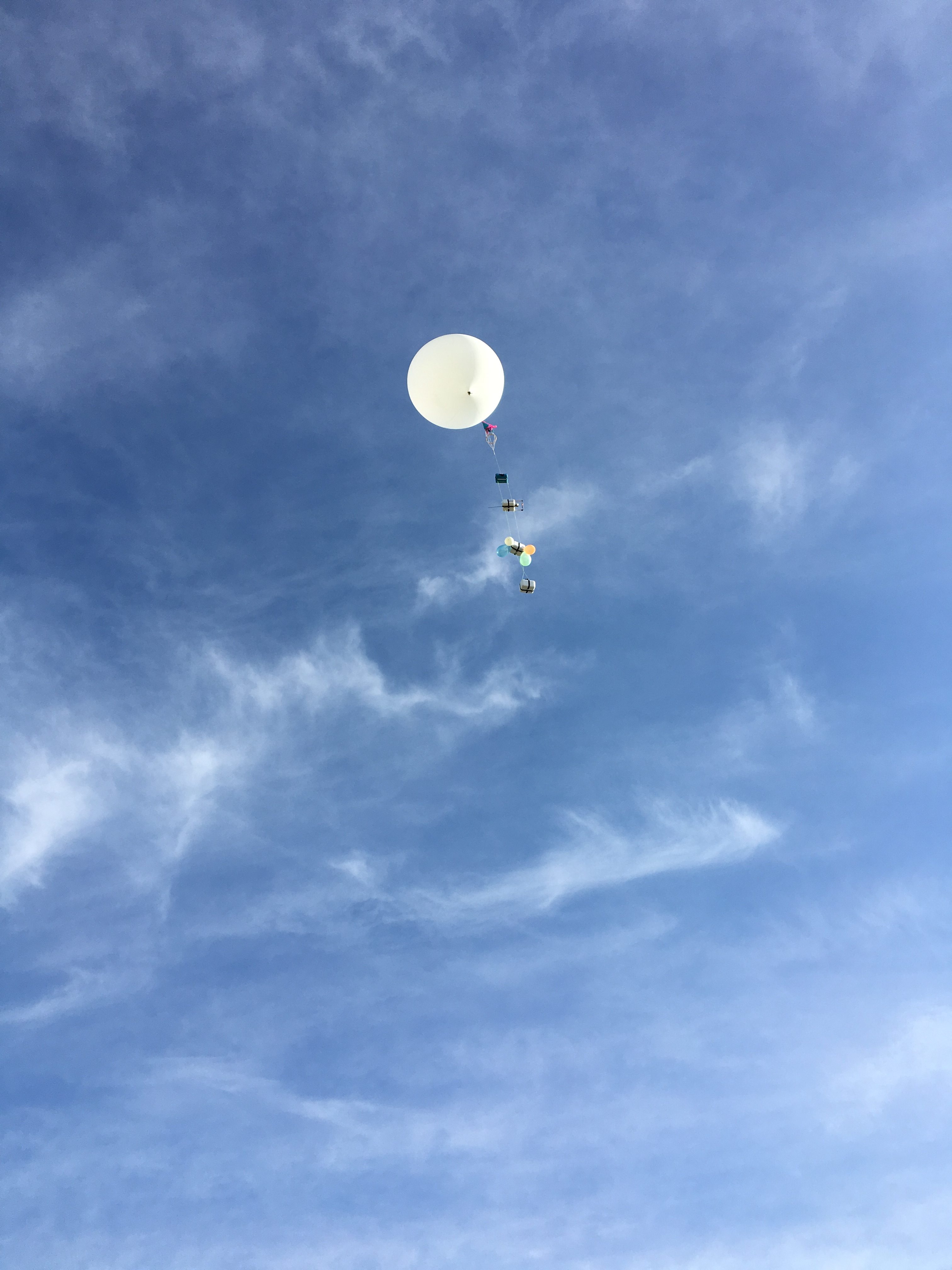
There it goes.
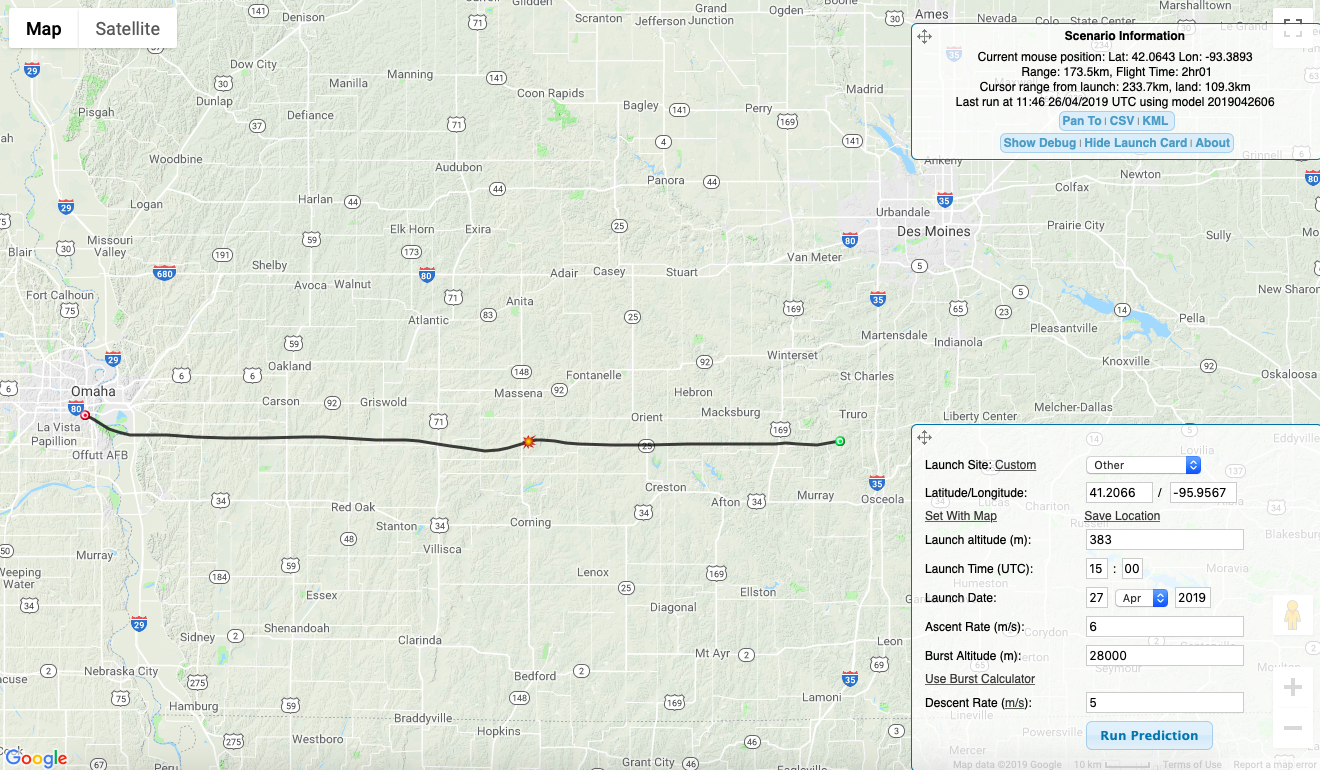
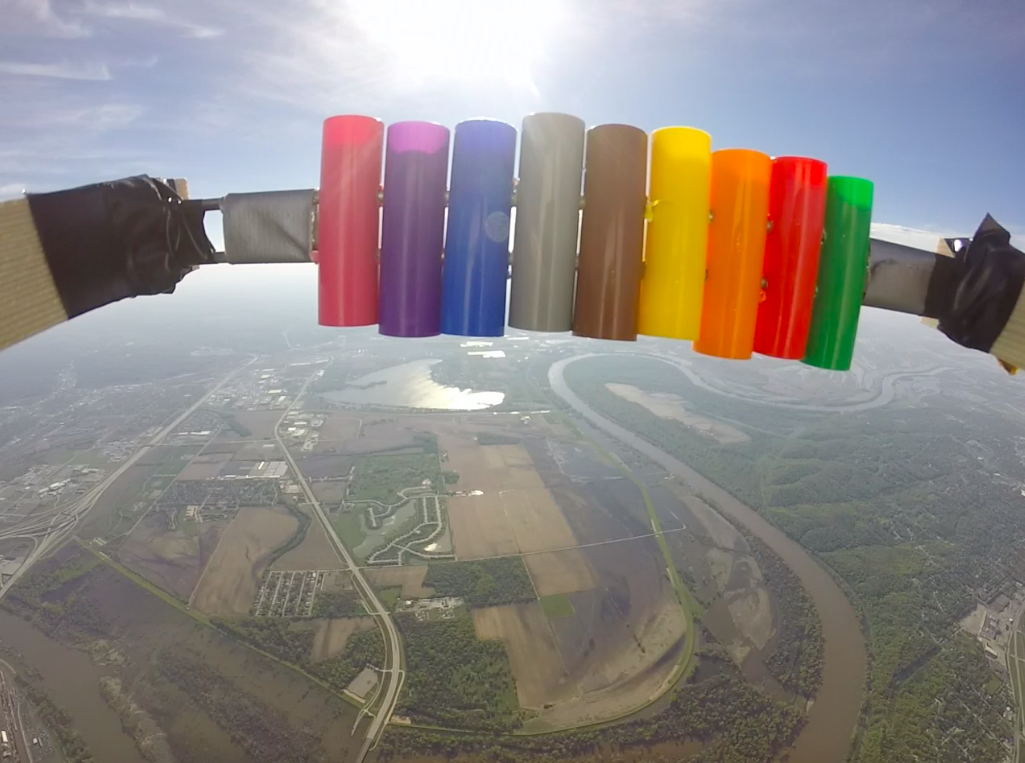
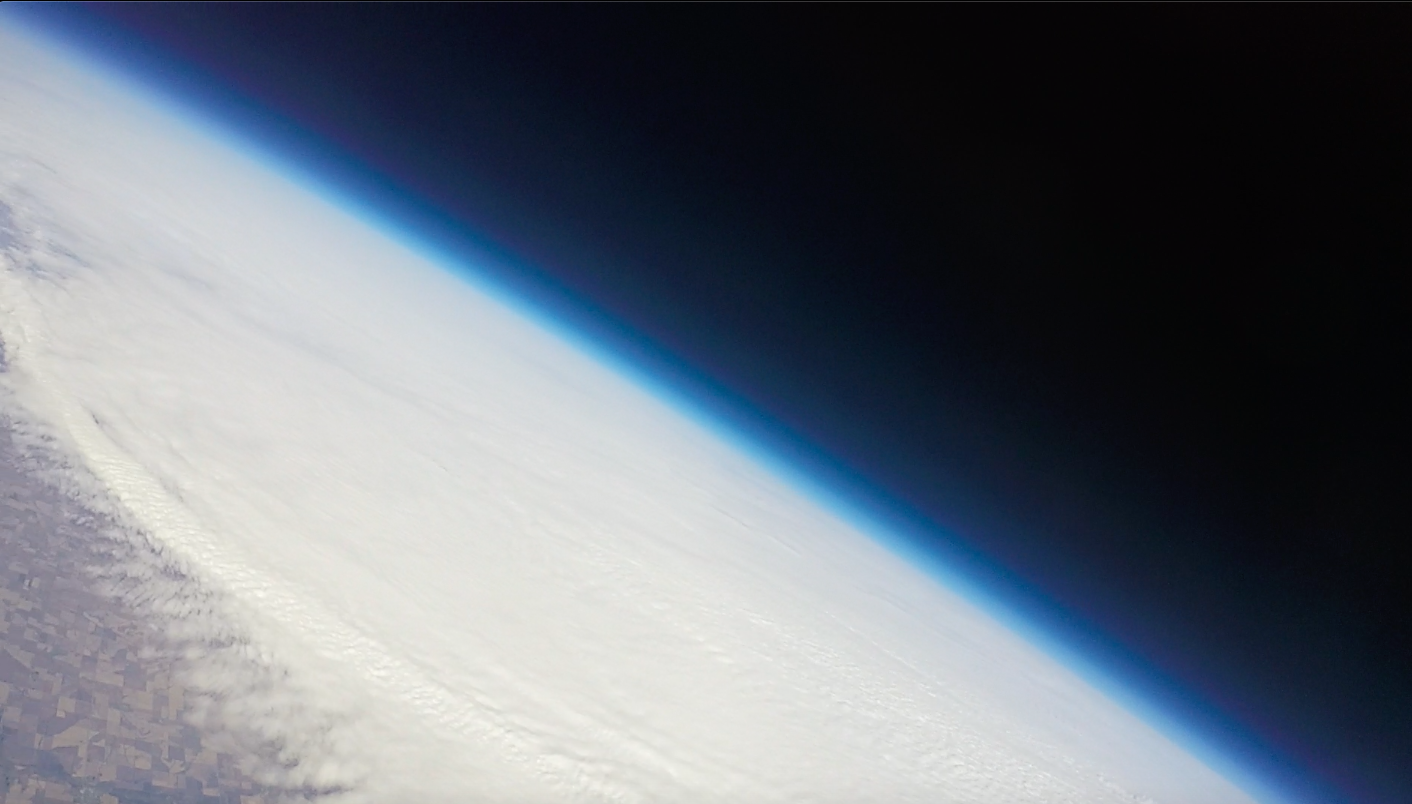
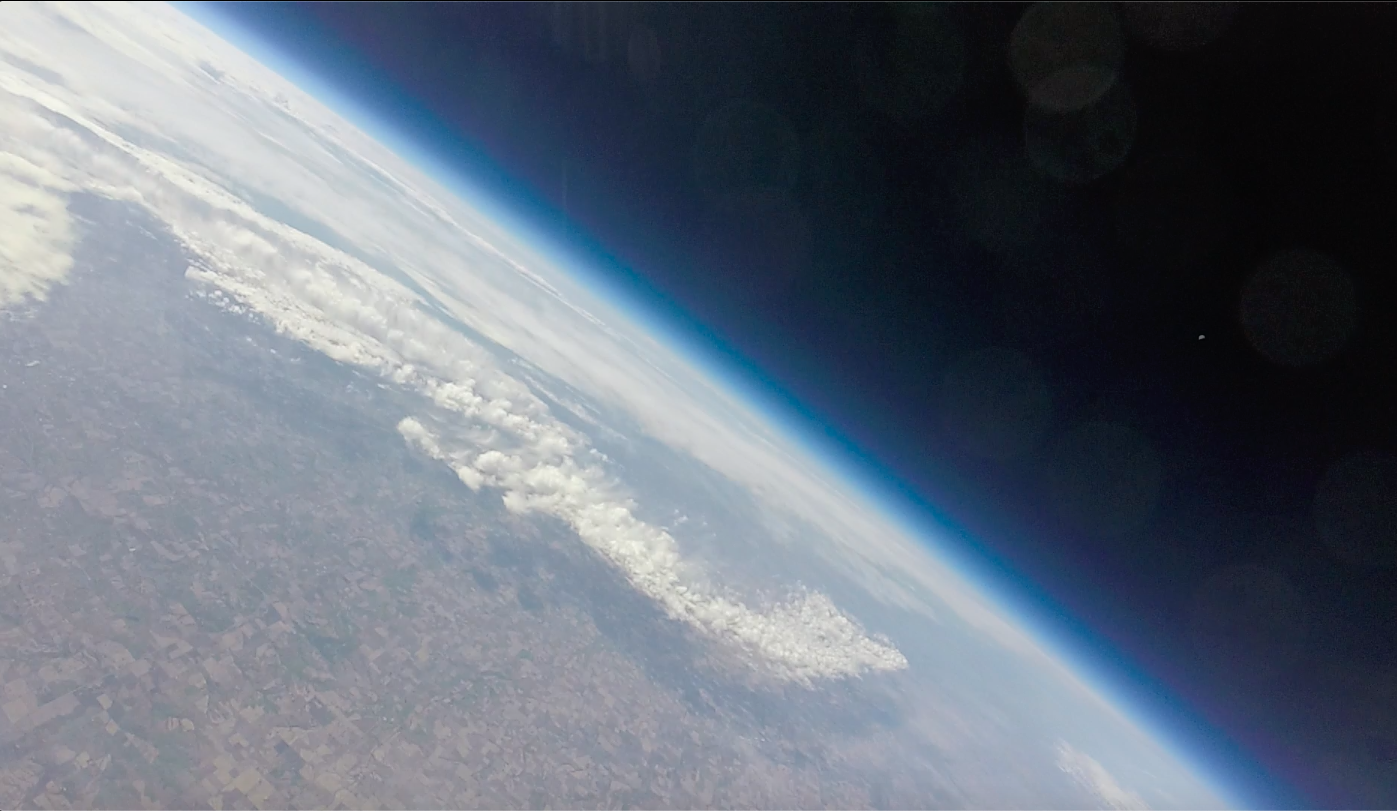
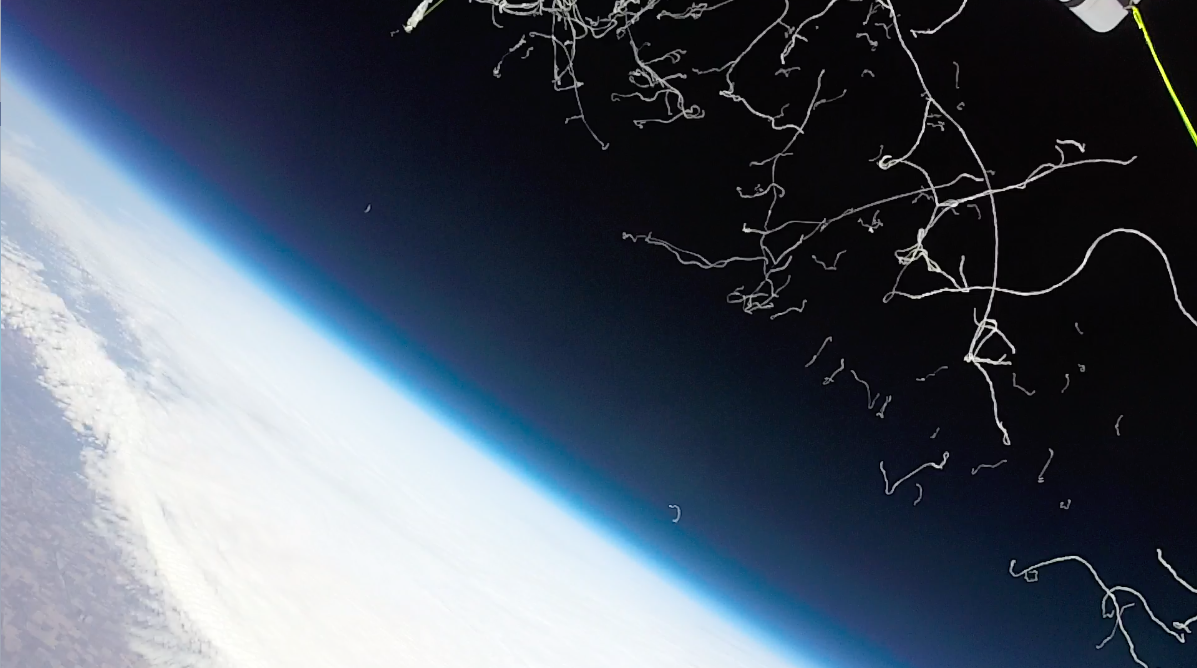
The Stratostar Mission Control stopped transmitting over 30,000 ft., the secondary tracker through APRS worked throughout the flight and the tertiary tracker SPOT GPS also worked.
The payloads landed in a wind farm on near Bridgewater, Iowa. It was a fairly easy recovery.
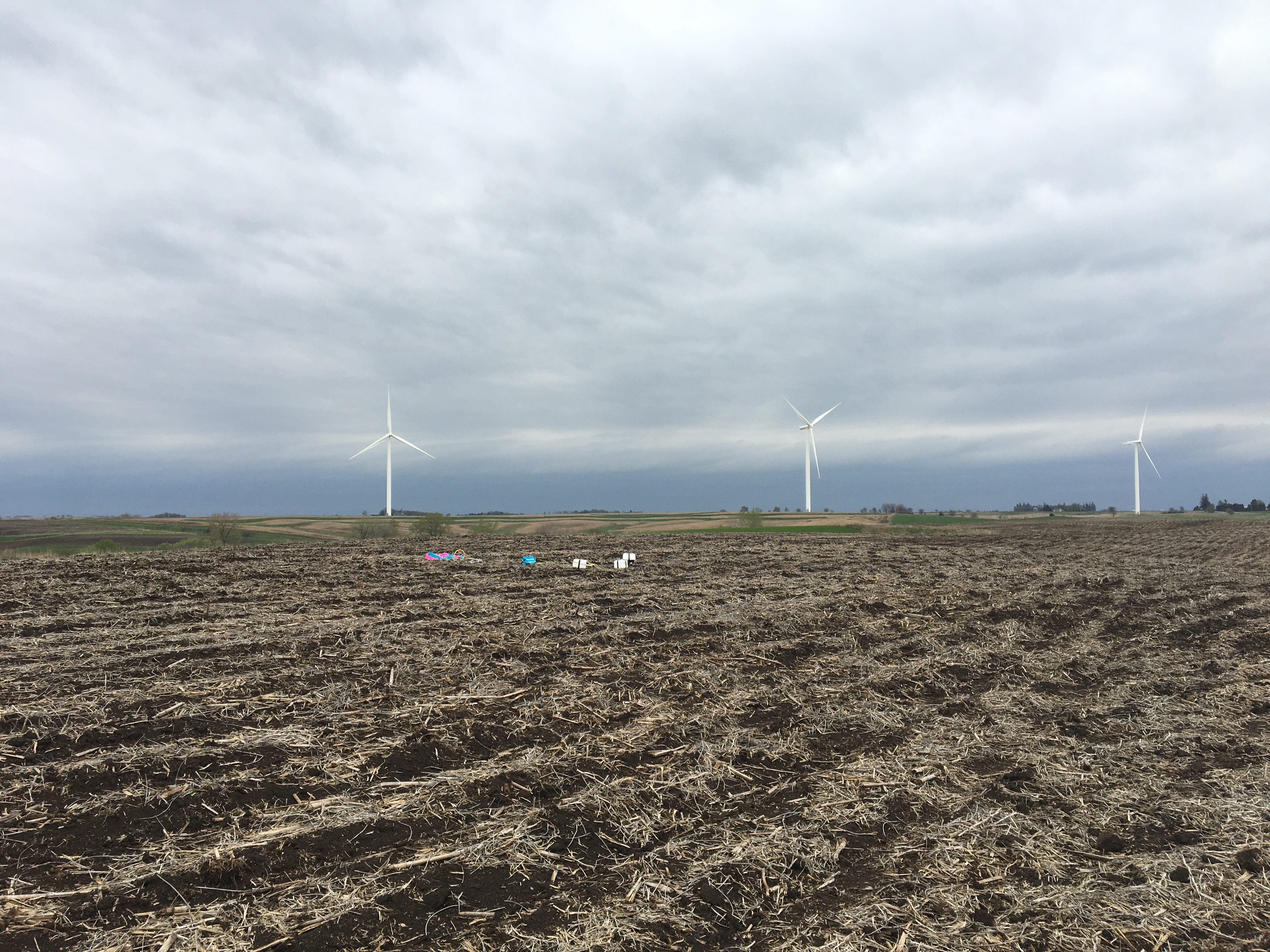
Payloads in field 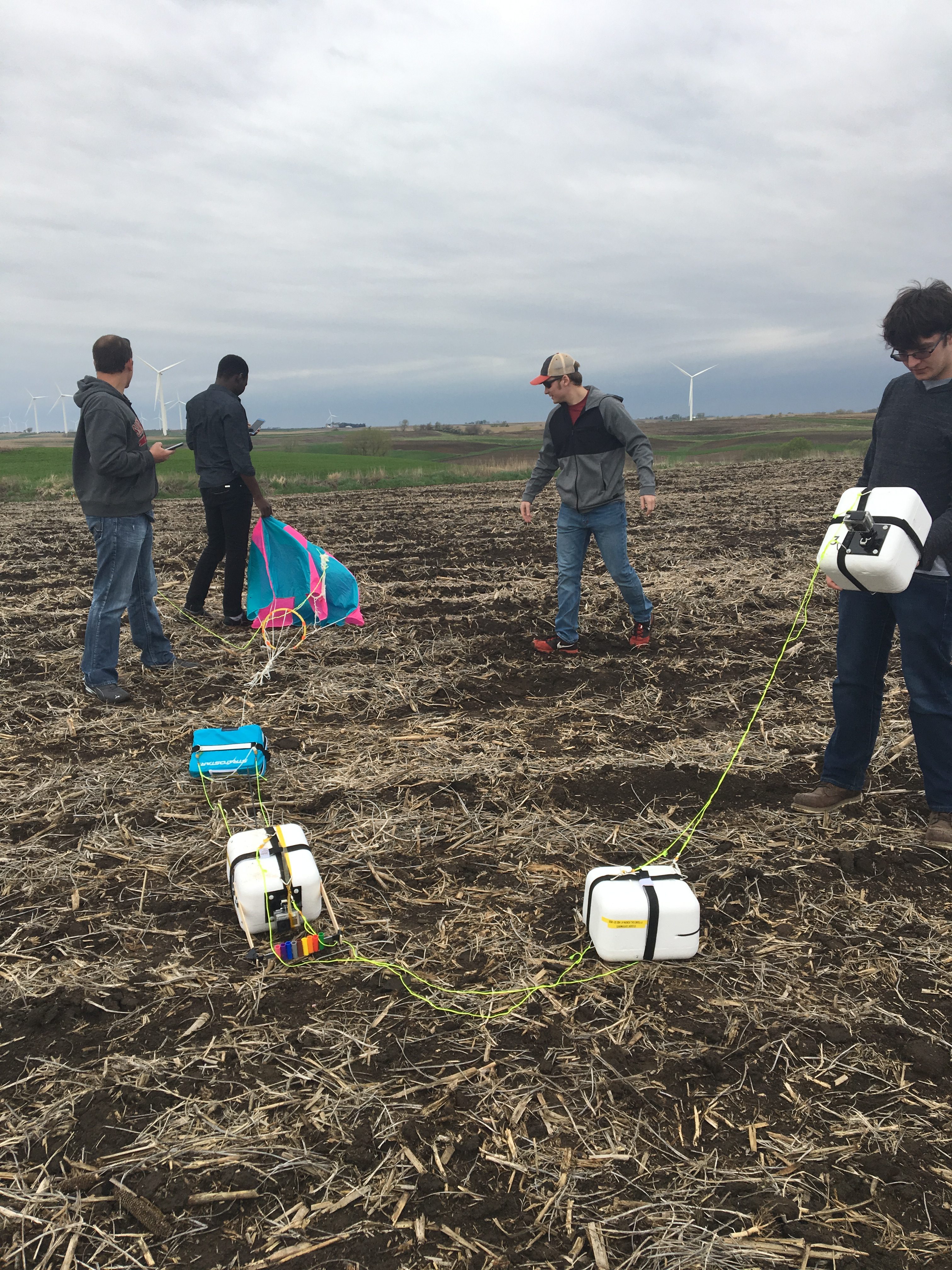
Examining the payloads
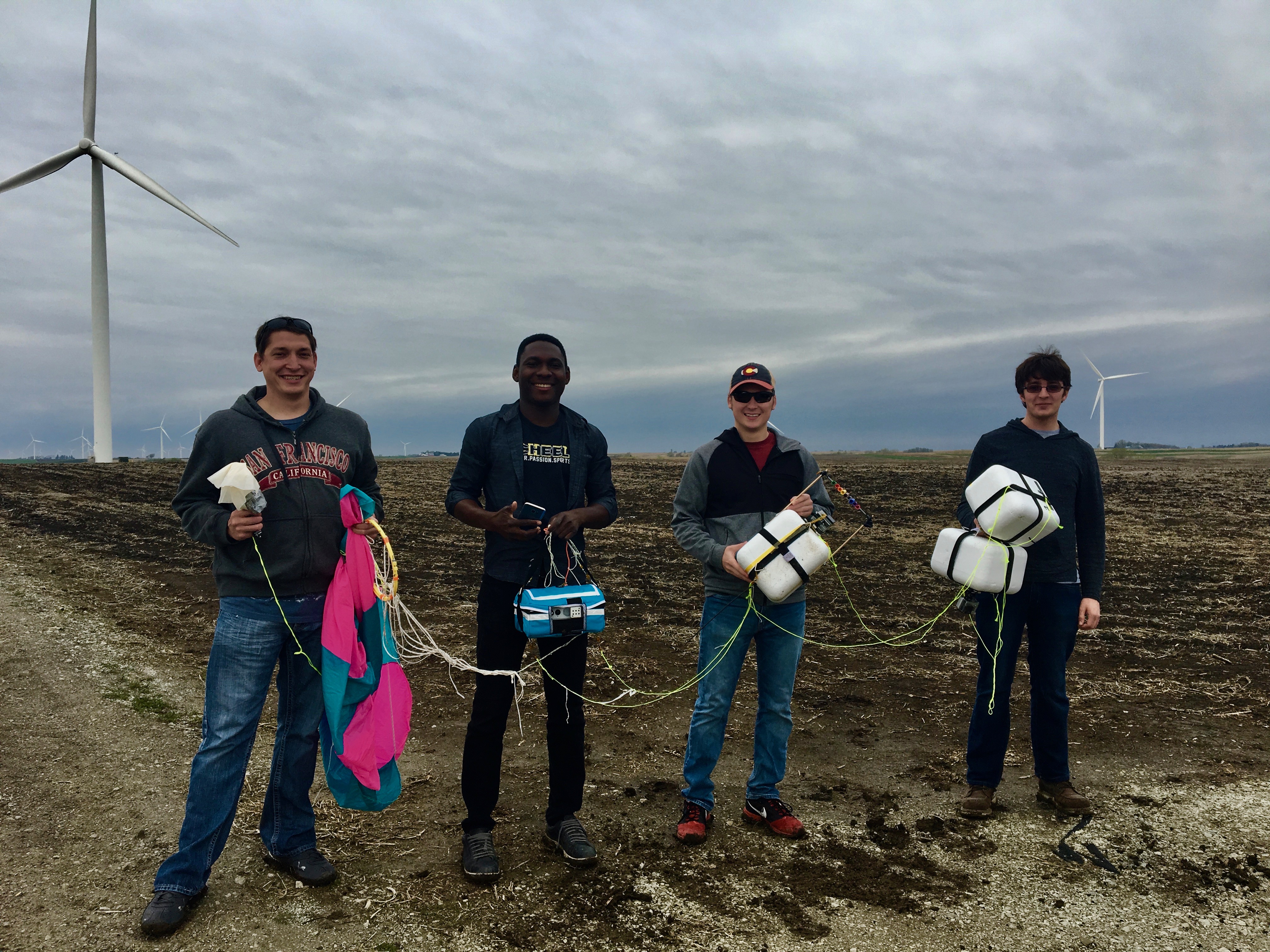
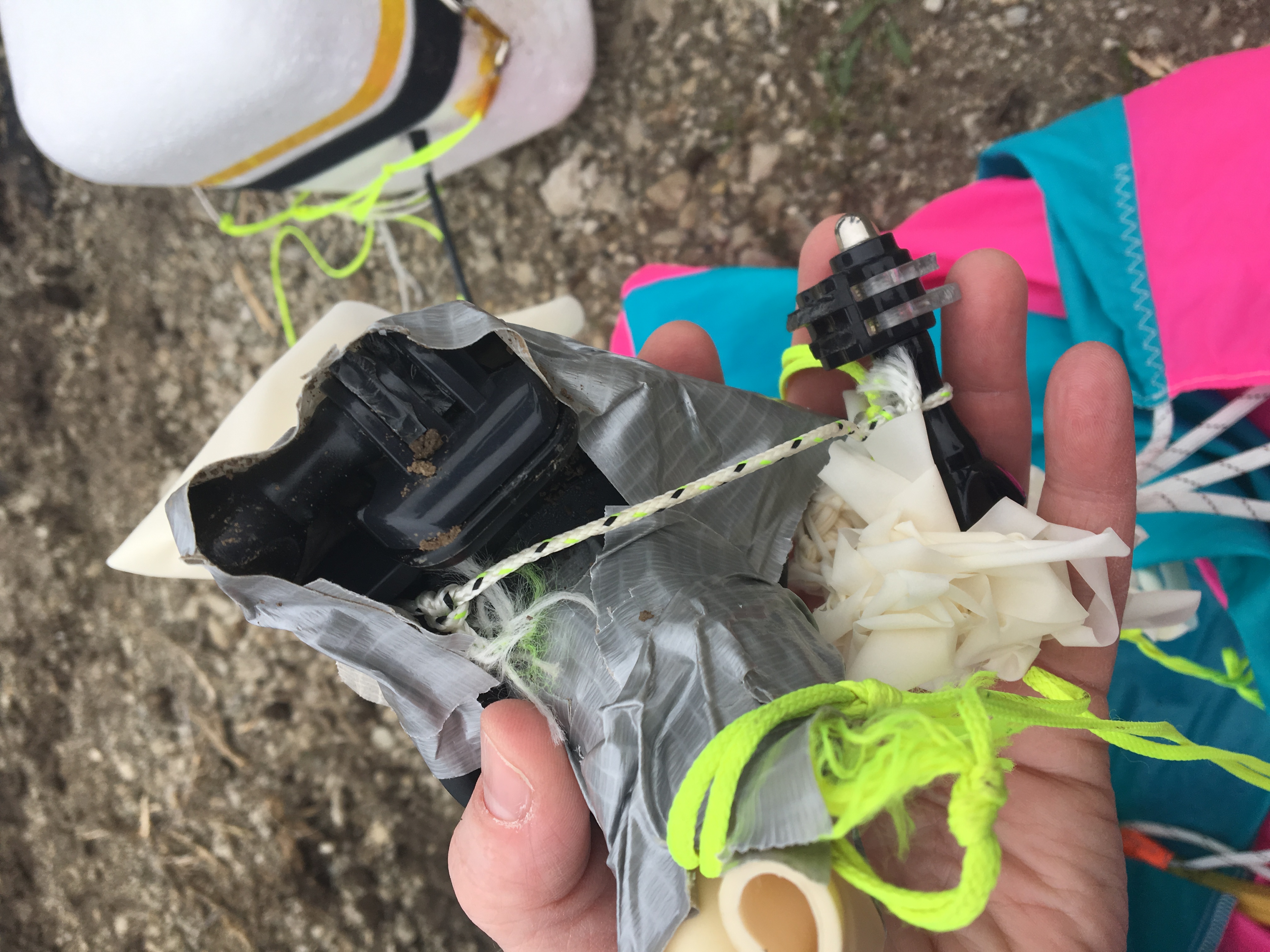
The plastic mount broke in two places.
The data file onboard the SatCom was complete through the flight and every team was able to get data to answer their research questions either through the digital data or the two additional Go Pro 3+ cameras that were on the pods. We look forward to the students presenting their results at a poster presentation at the spring MCC Showcase.
